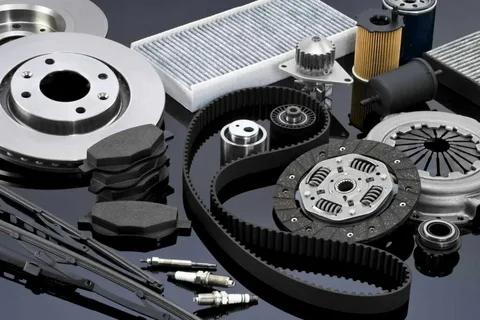In the realm of data protection, backup strategies are essential for ensuring business continuity and safeguarding critical information. Two popular approaches that often come up when discussing backup methods are incremental and differential backup. While both methods serve the same overarching purpose—saving data and enabling recovery—they differ significantly in their execution, benefits, and potential drawbacks. Understanding the differences between the two is crucial for businesses, especially in a world where data security and quick recovery are more important than ever.
In this blog, we’ll explore what differential and incremental backups are, how they work, and their respective advantages and disadvantages. We’ll also discuss how cloud-based solutions, such as OneDrive backup, fit into modern backup strategies.
What Is a Differential Backup?
A differential backup refers to the process of backing up data that has changed since the last full backup. To clarify, a full backup copies every file in the system, providing a comprehensive snapshot of all the data. Once this full backup is completed, a differential backup will only capture the files that have been modified or added since that point.
For example, if you run a full backup on a Sunday and conduct differential backups each day for the rest of the week, Monday’s differential backup will include only the files changed since Sunday. Tuesday’s differential backup will include all the changes made on Monday and Tuesday, and so on. This means that with each differential backup, the size of the backup file increases, as it accumulates all the data modified since the last full backup.
Advantages of Differential Backup
- Simplicity: A differential backup is straightforward because it only requires the last full backup and the most recent differential backup for a complete recovery.
- Faster Recovery: Since fewer incremental steps are needed during restoration, recovery tends to be quicker compared to incremental backups.
- Balanced Resource Use: While larger than incremental backups, differential backups are smaller than full backups, making them a good middle ground in terms of storage space and time.
Disadvantages of Differential Backup
- Increasing Backup Size: As more changes accumulate, the differential backup file grows larger over time, potentially leading to longer backup windows.
- Storage Demands: Differential backups require more storage space than incremental data backups, though less than full backups. As the week progresses, the differential backups become increasingly large, putting more strain on storage resources.
What Is an Incremental Backup?
An incremental backup takes a different approach. It backs up only the data that has changed since the last backup of any kind—whether it was a full or an incremental backup. After a full backup, the first incremental backup will capture any changes made since that full backup. The second incremental backup will only save the changes made after the first incremental backup, and so on.
For example, if a full backup is run on a Sunday, Monday’s It will include only the files changed on Monday. Tuesday’s incremental backup will include only the files changed since Monday’s backup, and Wednesday’s backup will only cover changes since Tuesday.
Advantages
- Smaller Backup Files: Incremental backups are typically smaller than differential backups because they only save the changes made since the last backup of any kind.
- Efficient Use of Storage: By storing only the most recent changes, incremental backups are more space-efficient, requiring less disk space than differential backups.
- Faster Backup Time: Since they only capture new data since the last backup, incremental backups are faster to perform, minimizing disruption.
Disadvantages
- Slower Recovery: While incremental backups save storage space and time, they make the recovery process more complex. To restore the system, you’ll need the last full backup and all the incremental backups made since that full backup.
- Potential for Data Loss: If one incremental backup in the chain becomes corrupt or is lost, any backups following it may become unusable.
Key Differences Between Differential and Incremental Backup
Understanding the differences between these two methods helps businesses choose the most suitable option based on their needs:
- Backup Time: Incremental backups are faster to execute than differential backups since they capture less data. However, differential backups are quicker than full backups.
- Recovery Time: Differential backups are easier and faster to restore because you only need the last full backup and the most recent differential backup. Incremental backups, on the other hand, require every backup since the last full one, which can make recovery more time-consuming.
- Storage Needs: Incremental backups are more space-efficient, as they store only minimal changes. Differential backups, while more storage-intensive than incremental backups, are less demanding than full backups.
For companies using cloud-based services like OneDrive backup, it’s essential to understand which backup method aligns with their overall data protection strategy. OneDrive can serve as both a backup and a storage solution, offering businesses flexibility in safeguarding their files. Depending on the organization’s preferences, a combination of full, differential, and incremental backups can be implemented to maximize data protection while minimizing costs and storage needs.
Which Is Best for Your Business?
Choosing between differential and incremental backups depends on the specific needs of your business:
- Faster Recovery Needs: If quick recovery is more critical than the amount of storage used, differential backups may be the better choice. With fewer steps to restoration, downtime is minimized, which can be essential for certain operations.
- Efficient Backup: If minimizing storage space and backup times is more important than recovery speed, incremental backups might be more appropriate. They use less storage and perform backups faster, although they come with a more complex recovery process.
- Hybrid Approach: Some businesses combine both methods. For example, they might run incremental backups throughout the week and perform a differential backup at the end of the week. This method can offer a balance between storage efficiency and recovery speed.
Cloud solutions like Microsoft 365 OneDrive backup provide businesses with scalable options that support both incremental and differential strategies. OneDrive can act as a secure location for storing backups, ensuring that no matter the chosen backup method, data remains accessible and protected in the cloud.
Conclusion
Both differential and incremental backups offer their own sets of benefits and drawbacks, depending on the needs of your organization. While differential backups allow for faster recovery with larger backup sizes, incremental backups offer efficient storage but can slow down the restoration process. For businesses utilizing cloud platforms like OneDrive backup, combining the two methods can provide a balanced solution that ensures data integrity and quick recovery. Ultimately, selecting the right backup strategy hinges on finding the best balance between time, storage, and recovery speed.










One thought on “Top 3 Differential vs. Incremental Backup Difference”